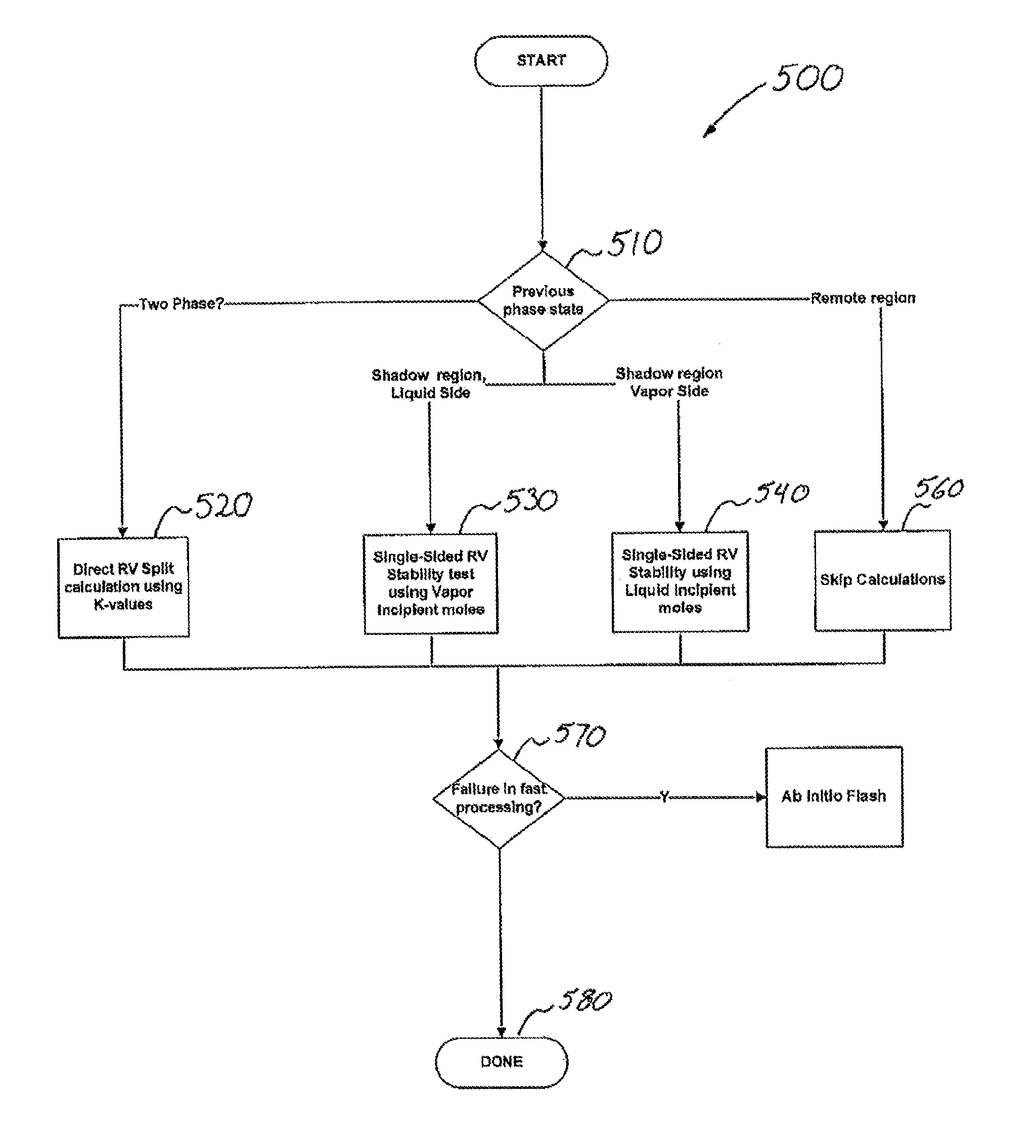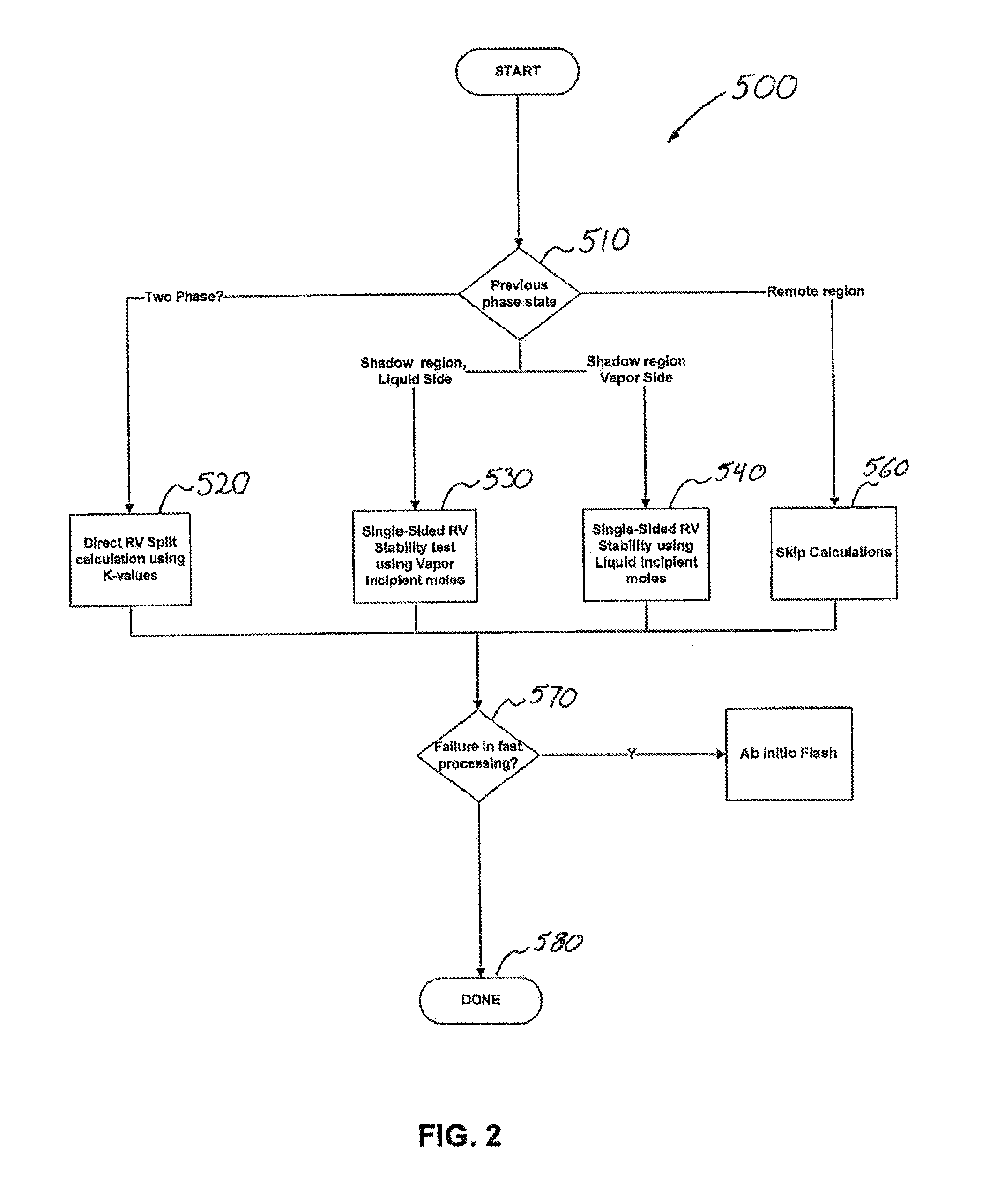Efficient Application Of Reduced Variable Transformation And Conditional Stability Testing In Reservoir Simulation Flash Calculations
- Summary
- Abstract
- Description
- Claims
- Application Information
AI Technical Summary
Benefits of technology
Problems solved by technology
Method used
Image
Examples
Embodiment Construction
[0024] The following nomenclature shall be used with the equations that follow:
SymbolsD =Tangent Plane Distance (TPD)G =Gibbs Free Energy function (GFE)c =Number of hydrocarbon componentsm =Number of non-zero Eigen valuesM =Number of reduced parameters. Equalsm+1P =PressureQ =Reduced variables (M-vector) of entriesQαQ =Reduction coefficients matrix of sizeMc of entriesqijR =Universal Gas ConstantT =Temperaturex =Liquid phase composition (mole fractions)y =Vapor phase composition (mole fractions)Y =Unnormalized moles of trial phasez =Feed (total) composition (mole fractions)Subscriptsi, j =Component indexα =Reduced variable indexL =LiquidV =VaporSuperscriptsF =Feed phaseT =Trial phaseGreek symbolsφi =Fugacity coefficientδij =Binary interaction coefficients (BIC)
[0025] The teachings of Firoozabadi, A. and Pan, H., Fast and Robust Algorithm for Compositional Modeling Part I—Stability Analysis, SPE 63083 and Firoozabadi, A. and Pan, H., Fast and Robust Algorithm for Compositional Mode...
PUM
 Login to View More
Login to View More Abstract
Description
Claims
Application Information
 Login to View More
Login to View More - R&D
- Intellectual Property
- Life Sciences
- Materials
- Tech Scout
- Unparalleled Data Quality
- Higher Quality Content
- 60% Fewer Hallucinations
Browse by: Latest US Patents, China's latest patents, Technical Efficacy Thesaurus, Application Domain, Technology Topic, Popular Technical Reports.
© 2025 PatSnap. All rights reserved.Legal|Privacy policy|Modern Slavery Act Transparency Statement|Sitemap|About US| Contact US: help@patsnap.com



